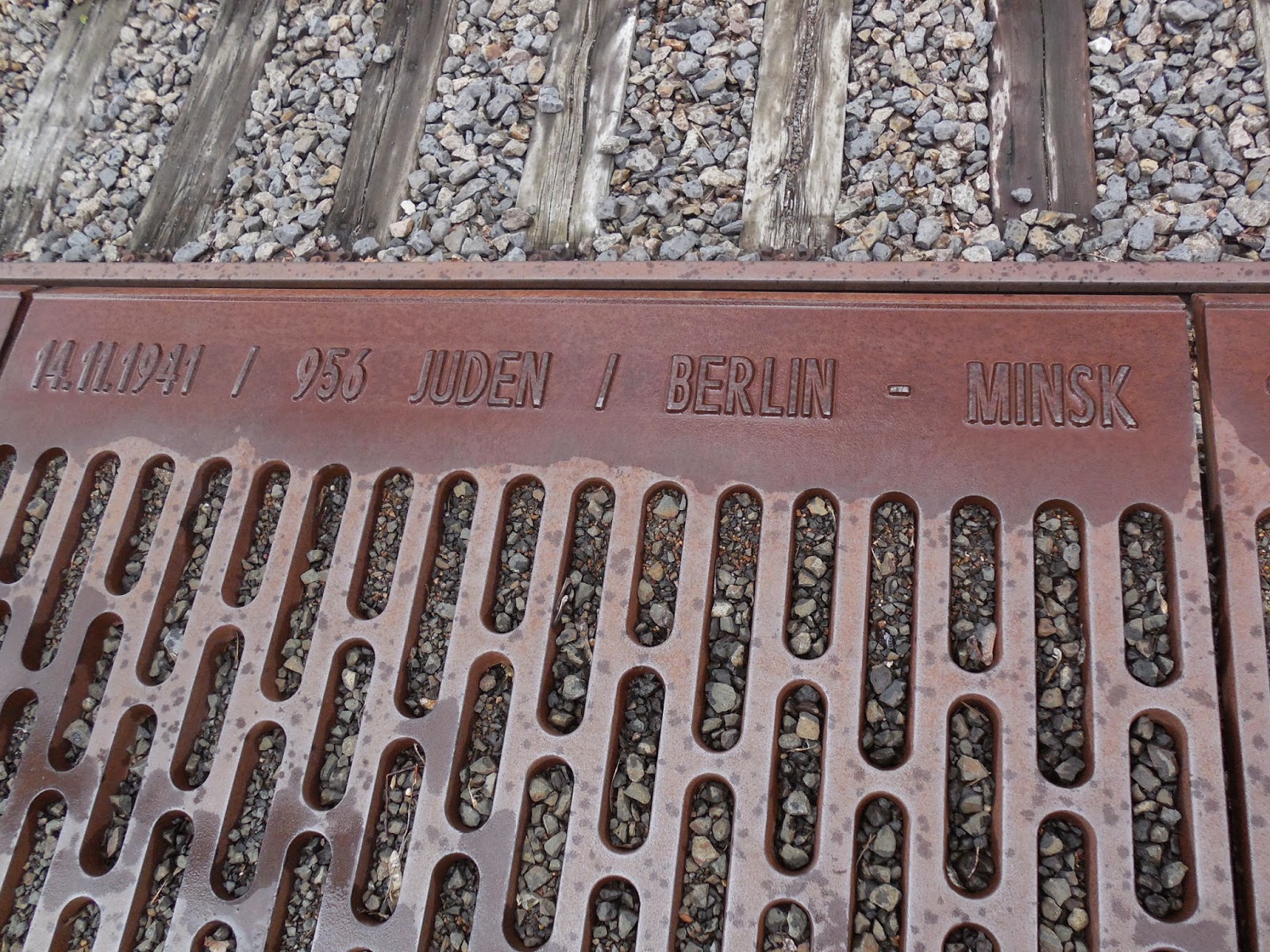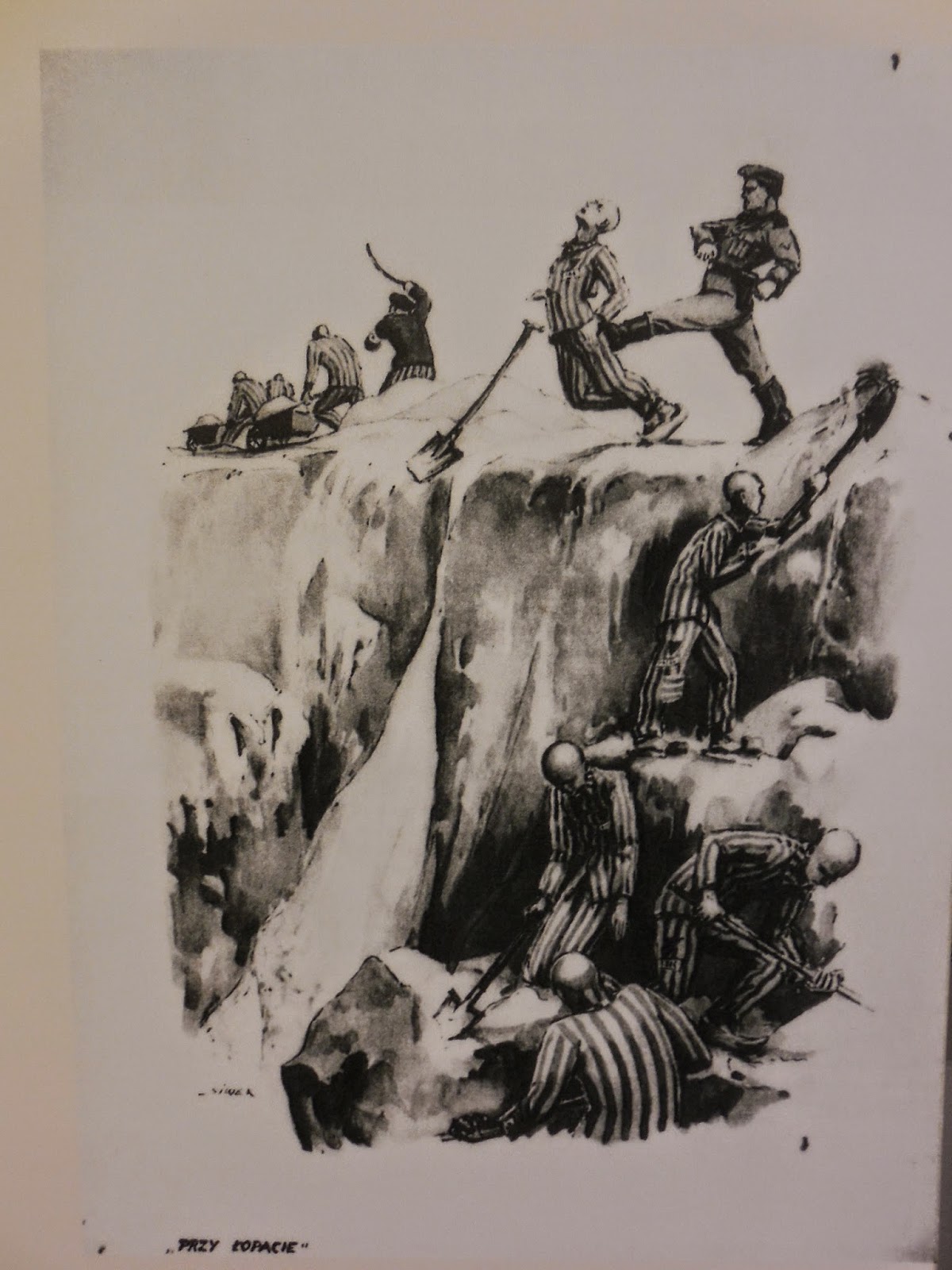Siegessäule, Berlin's famous victory column. He noted that a number of British and American soldiers he knew referred to it as "the chick on the stick".
He told us he'd spent a good part of his young adulthood in Wales and Ireland (I believe). He shared that he had recently lost a great deal of weight and was anxious to get back into shape so he could play rugby. He also mentioned that he had recently been felled by heatstroke.
We had felt that heat while in Poland and the Czech Republic. The day we were touring about Berlin, the temperature had dropped well below 70. It was drizzling, so it felt quite cool. Frankly, that's just the way I like it--perfect touring weather.
What made Andy great was the plan he had for our day. He was taking us to particularly meaningful Holocaust memorial sites. We started at "Berlin: Levetzowstraße, I. The Liberal Synagogue, Levetzowstraße, was one of the largest synagogues in the city. It consists of metal tiles representing the destroyed synagogues of Berlin."
 | |||
| This obelisk contains the dates transports left from the Levetzowstraße Synagogue. |
Today, beyond the obelisk, the site also features plaques identifying the 34 Berlin synagogues.
The plaques list seating capacities and other building facts for each of the synagogues.
 |
| This is the plaque for Synagogue Levetzowstraße. I don't think I've ever seen a synagogue with seating capacity for 2,120. |
Perhaps the most meaningful site on this tour was Platform 17/Gleis 17. The Deutsche Bahn site states, "without Deutsche Reichsbahn, the deportation of the European Jews to the extermination camps would not have been possible."
This memorial was established by the Deutsche Bahn to commemorate the deportations of Jews from the western district of Grunewald (which, by the way, is not too far from the Wannsee Villa). The Deutsche Bahn site says that for many years, the rail systems in East and West Berlin did not acknowledge the role of the railroad in facilitating the Holocaust. The memorial was not established until 1998. Some 50,000 Jews were deported from this location starting October 18, 1941, and ending in February 1945. The first group of 1,251 prisonsers was sent to Lodz.
There are similar "grates" positioned up and down the length of this segment of the platform detailing the date, the number of Jews on the transport, and the destination. Altogether, there are 186 such plaques.
The designers made a purposeful decision to allow the track to disappear into overgrowth. The message is: no more trains will ever leave from this platform.
Beyond the end of the track is another sculpture wall.
The forms scooped out of the wall suggest absence and shadow. I found the emptiness to be haunting.
Our next stop was the German Resistance Center. We had time only for a quick stop, so we didn't go in to the Museum itself. This is definitely a site I'd like to visit when I return to Berlin. According to the website for the Memorial, this is "the site of Hitler's speech of February 3, 1933, on "Lebensraum (living space) in the east." Yet the site is best remembered as the center of the attempt to overthrow the National Socialist regime on July 20, 1944." The German Resistance Memorial Center is located in the Bendler Block. This is where Hitler's would be executioner, Claus von Stauffenberg, was executed.
 |
| These are the names of the officers executed on this site. |
We then drove to the Denkmal fur die ermodeten Juden Europas--the Memorial for the Murdered Jews of Europe.
My friend Cindy and I had visited the Denkmal in the winter of 2013. The museum under the ground was one of my favorite on that trip.
We didn't have time to visit it this time. Instead, Andy had us stand among 2,711 steles (each with the same horizontal dimensions, and ranging in height from eight inches to 15 feet tall) and asked us to describe how we felt. I think it's worthwhile to do such reflection. We don't usually take such moments in the middle of touring.
The motif of the Memorial for Homosexuals is based on the Denkmal. The "twist" is that there's a peephole through which visitors can see a film of a kiss. According to the website, the memorial is intended as "a lasting symbol against exclusion, intolerance and animosity towards gays and lesbians."
We drove by the Bebelplatz on the plaza by Humboldt University. Only Sura and I were really interested in this site, so we decided to make the visit on our own.
We didn't get to return until the day before we departed. This is a fascinating exhibit commemorating the Nazi book burning. I found it very moving, but it was a complicated experience since there was construction on the site. It was also difficult to get good images in the middle of the day (which means I recommend visiting in the evening) and the number of visitors crowding around the relatively small space.
The memorial contains empty bookshelves.
 |
| This photo is from "A Teacher's Guide to the Holocaust." |
All of these visits took place before we had lunch. We really packed in a lot on this tour. I'll finish up discussion on the Berlin Memorials in the next post.



















































